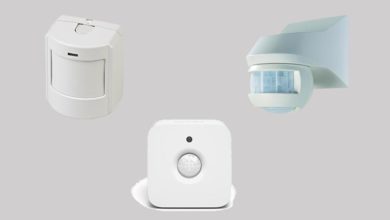How Do Motion Sensors Work
KEY TAKEAWAYS
Today, you can observe that every household tries to employ security systems to keep their family and valuables as safe as possible. Similarly, the usage of security systems in commercial spaces has grown in order to ensure that stores and products are protected. The fundamental purpose of home security systems is to secure doors and windows with motion sensors connected to a control panel.
An owner is in charge of protecting their building, residents, and possessions against harm and burglary. Therefore, it’s best to include motion sensors in your smart security system for increased security.
What Is A Motion Sensor
A motion sensor is a unique device that detects movement within a specified area. Depending on the type of motion sensor you install, this area might be only in front of the detector or all the way around it. These are typically employed to detect any motion around homes or stores, deter intruders, and trigger alarms or floodlights whenever motion is detected.
Basic motion sensors pick up objects between 6.5 feet and 70 feet away. If necessary, you may also get ones that can detect farther.
How Do Motion Sensors Work
Motion sensors spot movement by detecting rapid changes in the optical, infrared, microwave, or acoustic field of the sensor’s proximity.
Most sensors have a pyroelectric crystal that acts as a sensor, fitted with a Fresnel lens. The rapid change of a target around the sensor’s environment generates electric signals, which are then passed through an appropriate electrical circuit. After this, an embedded computer measures the pulse width and the rapidity of change. Motion sensors can differentiate a human body’s movement from an environmental activity through the rate at which the optical, infrared, microwave, or acoustic field changes.
When the sensors detect activity, transmitters inside the device broadcast radio signals and instantaneously turn on lights or create any other type of programmed response, such as activating an alarm.
Other Types Of Motion Sensors
There are other kinds of motion sensors available in the market today, aside from the Active, PIR, and Dual Technology sensors. These Optical, Vibration, and Area Reflective Motion Sensors are also handy for different situations.
Optical Motion Sensors
An optical motion sensor has a built-in light source that illuminates a “surfacer.” When this light is reflected to the lens and photosensor array, it will move about in the specific field of view, following the target.
Vibration Motion Sensors
This motion sensor is sensitive to the small vibrations people cause whenever they move through an area. They are simple to create at home but are also readily available to purchase online or in department stores. An alarm switch is activated when a small mass on a lever in a homemade vibration sensor shakes.
Area Reflective Motion Sensors
An area reflective motion sensor produces infrared rays from an LED and utilizes the rays’ reflection to determine how far away a person or object is, enabling the detection of movement within the predetermined area. Upon detection, this sensor may trigger an alarm or security lights to alert the homeowner.
Are you a first-time homeowner and want to buff up your home security? Check out the security advantages of smart home automation in this article by Security Forward.




